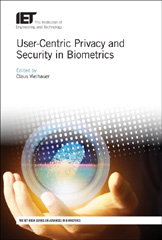Physical layer security: biometrics vs. physical objects
This chapter compares and describes the biometrics and physical object security fields, based on physical unclonable functions. Both lay at the foundation of authentication and identification architectures based on the assumption that the used primitives are both nonclonable and unique. First, it will cover the physical phenomena that form the basis for both biometrics and physical object security next to highlighting the specificities of the used verification schemes. Second, it will cover relevant properties and requirements such as the security principles, feature extraction, the effect of leaks, possible attack vectors and the practical technological requirements needed for the implementation.
- 4.1 Introduction
- 4.2 Fundamentals of physical layer security basedon unclonable functions
- 4.2.1 Randomness as a source of unclonability
- 4.2.2 Basic properties of unclonable functions
- 4.2.3 Basic enrollment-verification architecture of PUF systems
- 4.3 Image-PUFs: fundamentals of security with noisy data
- 4.3.1 Feature extraction
- 4.3.2 Template protection
- 4.3.3 Performance analysis
- 4.4 Attacks against biometrics and physical object protection
- 4.4.1 Attacks against biometric systems
- 4.4.2 Overview of reconstruction techniques
- 4.4.2.1 Signal processing reconstruction
- 4.4.2.2 Reconstruction based on machine-learning approach
- 4.4.3 Attacks against PUFs-based systems
- 4.5 Main similarities and differences of biometricsand PUFs-based security
- 4.5.1 Summary and conclusions
- References


